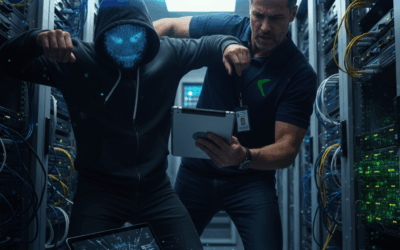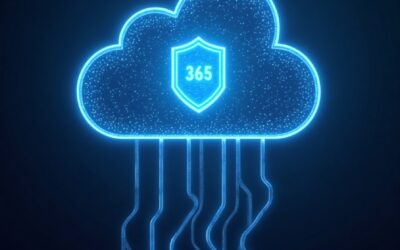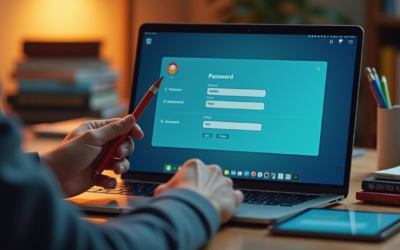“A cybercriminal only has to be lucky once, while a defender has to be lucky every minute of every day.”
– Combating Ransomware – A Comprehensive Framework for Action: Key Recommendations from the Ransomware Task Force.
The message we hear from governance boards over and over is ‘can you prevent hackers from stealing our data?’ Every time there is a high-profile attack, the calls get louder. As cyber security attacks become more frequent, the awareness of this activity increases exponentially.
The simple reality is that cyber-crime is now a mega-business. The cost and effort to combat cyber security threats grow all the time, and while nothing is guaranteed, there are things we can do to reduce your risk.
It means stepping up our collective cyber security game. New tools, new processes and new staff awareness. The protections that seemed excessive a year ago now seem to be inadequate. We have to keep adding new tools and services so that you can select a level of protection that you are comfortable with, and like your insurance, you need to reassess this every year.
What do you need to think about to protect your organisation?
1. The biggest risk is people and processes.
We suggest making a representative group and mirroring the practice of a Health and Safety committee. Have a ‘Cyber Security’ committee that spends time thinking about how someone could accidentally give away confidential data – start by thinking about how your data is held, where it is held, if it is confidential, and who has access to it. Next up are simple things like credentials. For example, if a client calls up for anything, from a question to a password reset, how do you verify who they are before providing any confidential info. Inside the company and out, people are the biggest risk to cyber security, and the security of the information your company holds.
2. We all know about malware and ransomware but…
Malware and ransomware typically get in through software bugs, and the best answer to this cyber security threat is to ensure everything is patched. Do you get regular reports to show that everything is patched or do you trust that it is done? “Everything” can be quite a long list but you can divide it up by types of machines (servers, laptops etc). Patching isn’t just for Microsoft tools, but everything that you use – Adobe, Google, and so on. Digital security is crucial across your network, even on mobile devices.
3. Keep your software up to date
Despite their best efforts, software providers like Microsoft, Adobe and others do have vulnerabilities in their products that hackers can and do exploit. Often these are around functionality, where the software enables organisations to build and automate their own solutions, but at the same time, these features can be misused. Developers work extremely hard to overcome these risks, and are regularly working on ways of offering the capability without the risk. Keeping the software up to date with patches is your key defence, and you need clear reporting that shows you are making sure you aren’t exposed with older versions.
4. We’re all aware of antivirus but today we need to go further.
A good level of cyber and information security requires a more intensive end-point protection and personal firewalls, even for computers that stay behind the corporate firewall. That’s because it’s surprisingly common for ‘guest’ machines to connect to networks, for example, to support visitors, and you simply don’t know what state their devices are in and what viruses they may introduce.
5. Common attack vectors include “phishing”. The best defenses are:
- Regular phishing tests, to see how aware your colleagues are.
- Cyber Security briefings and awareness training to help everyone stay alert and support each other, both via eLearning and in-person presentations. Kinetics provides Cyber Security training in NZ
- URL scrubbing – testing the URLs people click on BEFORE the site opens to warn you before you inadvertently browse to potentially infected websites.
- Layers of security (check this client story out)
6. The Darkweb!
It pays to be aware that some of your data is ALREADY on the darkweb. It will mostly be credential information scavenged from historical hacks of sites like Sony, LinkedIn, Marriott, and many others. Occasionally this will surface up to you as an email that states your account name, and password for a particular site, along with a threat, for example, “We know what you have been up to, pay a ransom or we will share this publicly”. If you recognise the username and password and it’s a common one that you use, then this threat can be very compelling.
The best defense is to ensure everyone uses unique passwords for everything, and the best way to do that is with a secure password vault tool.
7. Multi-factor authentication!
MFA isn’t infallible, but in conjunction with the items above, it’s a very important layer of cyber security. We regularly see compromise attempts on Microsoft 365 in particular, and these are being defeated by simple steps like enforcing multi-factor authentication, and where possible, limiting logins to territories that people log in from. For example, unless you have people currently in eastern Europe, then you can simply block access from IP addresses from those countries. MFA should be on EVERYTHING, not just Microsoft 365 but also the less common sites your people access.
8. Shadow IT DetectioN.
Looking at the first item on the list, you will be amazed at some of the tools in use by your people. It is extremely common for people to set up an account on an external website, or install an extension to get a job done. They often just use their email address and make up a password. That means that if they leave your organisation, they can still log in with the email address – the webtool doesn’t know they’ve left! Even worse, you don’t know how secure the tool is, and often you don’t even know about the tool at all! Shadow IT can hugely compromise the security of the data and information your organisation holds on to.
9. Microsoft have baked some excellent protections into Microsoft 365. Are you using them?
Microsoft has for example, ‘data leak protection’ to help set up a regime where Office 365 can detect confidential data (eg credit card numbers, health records, and so on) and then permit or prevent certain actions – for example preventing emailing a spreadsheet with more than say 5 of these records on it, or at least warning you before you do. It can also warn when it detects unusual behaviour such as copying or deleting large numbers of files. The trick is that this needs to be turned on, configured, and, above all, maintained and monitored.
Likewise, are you running any monitoring of your 365 environment, looking for unusual behaviours? There are so many exploits coming form hackers who get through one user’s credentials then expand their reach or start sending ‘ghost’ emails to redirect invoices, wire transfers and so on.
10. Consider vulnerability scanning on a regular basis.
Vulnerability scans are based around CVE (Common Vulnerability and Exposures) and CVSS (Common Vulnerability Scoring System) and are maintained by First.org, a global forum for response and cyber security teams. CVE’s can describe vulnerabilities in software on any connected device, from baby monitors to virtual appliances, CVE’s can be found everywhere and anywhere. A deep vulnerability scan is intensive. In addition to scanning devices, it will attempt to use common login and passwords to brute-force hack devices.
Latest Cybersecurity Insights & Resources
2025 Q4: Cyber Landscape Update (are you still feeling lucky? New Zealand’s Cyber-threat landscape demands action)
Why This Brief Matters A cybercriminal only has to be lucky once. You have to be lucky every minute of every day. That remains the stark reality for kiwi businesses in Q4 2025. This isn't another dry technical report filled with acronyms and alerts. Kinetics has...
SpamGPT: When AI Becomes a Phishing Playbook—And How to Protect Your Business
For years, we've told businesses to watch for telltale phishing signs: poor grammar, suspicious sender addresses, generic greetings. But what happens when cybercriminals have access to the same sophisticated AI tools your marketing team uses—except weaponised...
The Rise of AI-Powered Ransomware
Unveiling a dark future: The First AI-Powered Ransomware In a groundbreaking discovery, researchers at ESET have uncovered what they believe to be the first known AI-powered ransomware strain, aptly named PromptLock. This sophisticated malware is not just a step...
Webinar Replay: Rethinking Endpoint Security: Smarter Strategies for a Safer Business
Cyber-protection keeps getting more complex, more restrictive and more expensive. This month we are talking with expert Thomas Shobbrook. He updates us on the latest security trends and help us understand how well protected your device is out-of-the-box. We ask...
Webinar Replay – Securing the Mobile Frontier: Cybersecurity Essentials for Phones and Tablets for Modern Businesses
As mobile devices become the backbone of modern business operations, they also present a growing target for cyber threats. Apple or Android - they're both important. Every time you use these to access your Teams, Email or anything else, you are relying on them to be...
Device Code Phishing: A Dangerous New Scam You Need to Know About
Device code phishing is a sneaky new way hackers are stealing people's online accounts. In device code phishing, threat actors exploit the device code authentication flow to capture authentication tokens, which they then use to access target accounts, and further gain...
June 2025 Report: Cyber is now the THIRD largest economy in the world
As we approach the midpoint of 2025, New Zealand’s cyber security landscape continues to evolve rapidly. With digital transformation accelerating across sectors, the country faces a growing array of cyber threats—ranging from financially motivated scams to...
Webinar Replay -Enhancing Your Security Posture with Microsoft Secure Score
This webinar replay covers the essentials of Microsoft Secure Score. Secure Score is a powerful tool designed to help businesses assess and improve their security across Microsoft 365 workloads. We will explore what Microsoft Secure Score is, why it is crucial for...
Webinar Replay – 5 mistakes people often make with passwords and how to overcome them
Passwords are the first line of defence against cyber threats. However, many people still make common mistakes that leave their accounts vulnerable. Watch this video for a 30-minute webinar where we will discuss the most frequent password pitfalls and how to avoid...
Who’s been paying attention?
We’re really proud of our clients! Last week, these little pieces of ill-intentioned mischief popped up for a couple of the businesses we look after.They were smart enough to evade anti-spam software but not the cyber-training. Although the emails look legitimate,...











